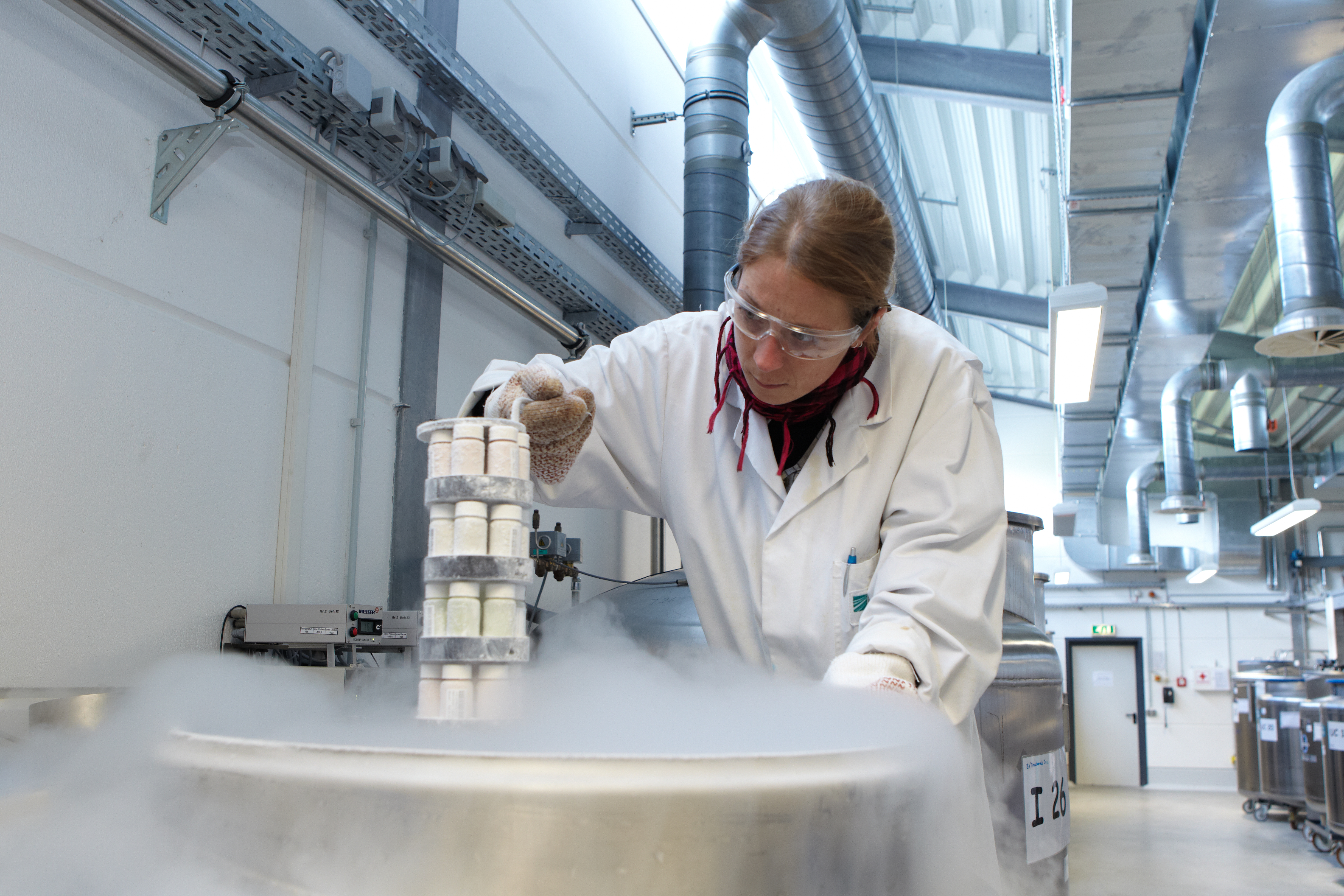Scientists systematically take environmental specimen from representative ecosystems in Germany. These samples are classified and stored at temperatures below -150 degrees Celsius so that chemical composition of the substances remains unchanged for decades. The archive for environmental specimen is located at the Fraunhofer Institute for Molecular Biology and Applied Ecology in Schmallenberg.
The human part of the ESB archives human samples of blood, blood plasma, urine, saliva, and hair. Scientists seek to track the deposits of chemicals in the human organism as well as their distribution and transformation. This archive aids in the analysis of which pollutants and amounts thereof people in Germany are affected by, and how this changes over time. The archive for human specimens is maintained by Fraunhofer Institute for Biomedical Engineering IBMT on behalf of the German Federal Environment Agency.
The objectives of collecting human specimens for the ESB are as follows:
- To take human samples from suitable sampling populations at regular intervals,
- Long-term storage of the samples without loss of information,
- To document the subjects’ living conditions by means of a standardised questionnaire,
- Retrospective analysis: reviewing earlier data with new analytical procedures as well as determining the extent to which older samples are contaminated with pollutants that have only just been discovered,
- Assessment of subjects’ exposure to pollutants and any changes over time (trend analysis),
- Identification of possible sources of exposure (place of residence, nutrition, etc) and risk groups,
- Storage and administration of data.
Time-based exposure trends
Scientists determined that whereas human exposure to arsenic, cadmium and mercury has remained unchanged over the past 20 years in Germany, exposure to lead and pentachlorophenol (PCP) has dropped significantly. More recently the focus in environmental medicine has shifted to dioxins (PCDD, PCDF), polybrominated diphenyl ethers (PBDE), perfluorooctanesulfonates (PFOS), and perfluorooctanoic acid (PFOA). Retrospective analyses have shown that corporal loads of dioxin as well as PFOS and PFOA in test persons have declined, whereas PBDE levels have increased. These trends are corroborated by other national studies.
The Environmental Specimen Bank is a federal responsibility borne under the aegis of the German Federal Ministry of the Environment, Nature Conservation, Building and Nuclear Safety and coordinated by the German Federal Environment Agency (Umweltbundesamt).


